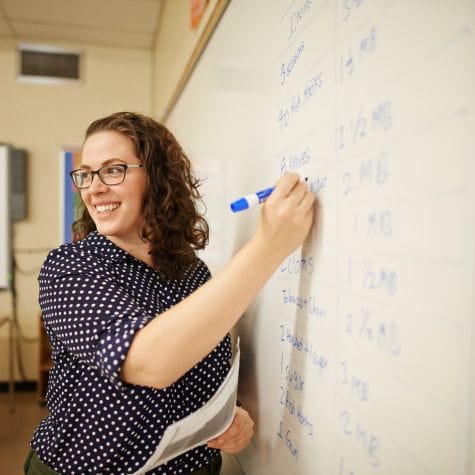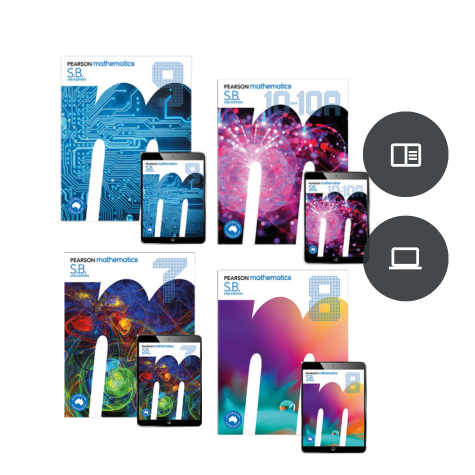If they see it, they’ll know they can be it: The importance of female mentors in STEM
STEM is an educational program developed to prepare primary and secondary students for college and graduate study in the fields of science, technology, engineering, and mathematics (STEM).
Teenagers often perceive STEM professionals as white, nerdy and male – and this masculine stereotype can negatively affect the involvement of girls in STEM. The thing is, we need more girls in STEM – and mentor ship programs might be the key.
Women have always been grossly underrepresented in STEM fields – and at all stages of the pipeline – enrolment, retention, graduation, and employment. They still are. But this has not held them back. They have always managed to conduct ground-breaking research and come up with life-changing inventions.
It’s thanks to women in STEM that we have bulletproof vests, home security systems, or windscreen wipers. Now we are able to locate objects in space as efficiently as we do now, look inside bacteria, use artificial intelligence to better select healthy embryos for IVF, or diagnose ear infections with smart phones.
There’s no doubt that what women lack in numbers, they make up for in seriously spectacular ideas. But it does make you wonder what the world would be like and how advanced the human race would be, if there were equal numbers of men and women in STEM.
This is exactly why we need our girls.
In 2016, Dr Marguerite Evans-Galea, Co-Founder of Women in STEMM Australia, delivered a keynote address at the ‘Women and the Economy Forum’. In it, she stressed that Australians need to be prepared and well-resourced for the challenges we’ll face in the next 50 years. She listed challenges related to water security, food production, the health and education of Indigenous Australians, the availability of arable land and the conservation of our native flora and fauna. And all of this in the context of climate change and a growing population.
To address these challenges, our thinking and leadership need to be representative of our population. This means that half of our problem solvers and leaders should be women – which is not the case. A report by the Office of the Chief Scientist in Australia revealed that women make up less than one third of STEM university graduates, and only 16% of the STEM workforce.
She stressed that educators must intervene before students lose interest in STEM – and that women and girls need mentors. Her own organisation, Women in STEMM Australia, has already connected with other organisations that provide inspiring and up-to-date STEM learning experiences for all students, but most importantly, girls.
The simple fact is, as Dr Evans-Galea beautifully alluded to, if only half the population is coming up with the best ideas, we have to ask ourselves if, in fact, they are the best ideas.
It’s the masculine stereotypes that are turning girls away.
Research shows that when adolescent girls perceive STEM fields as masculine, it negatively affects their identification, interest, and involvement in STEM. This could go quite a way towards explaining why, for girls, interest in STEM starts to decline from the age of 12.
Exacerbating the stereotypes perpetuated by popular media are the seemingly innocent comments made to girls and women by friends, family and teachers. And the masculine culture that dominates STEM fields – often deemed hostile and uninviting to women.
Whether we’ve done it on purpose or accidentally, we’ve created a world that conditions girls to think that they are not as able as boys when it comes to STEM. The good news is, we’re becoming increasingly aware of the current state of affairs, so we can work towards sorting them out.
Teachers can help by bringing female mentors into the classroom.
We should certainly start by showing girls what women in STEM have achieved: how they’ve shaped history and changed our lives for the better. But ideally, we’d take it one step further by bringing female role models into the classroom. Research recently undertaken by Microsoft has revealed that exposure to real world examples of STEM and the presence of role models and mentors have a profound impact on girls and their connection with STEM.
Mentors help because when girls see it, they’ll know they can be it.
In 2017, it was reported that students of colour are more likely to graduate from school if they have at least one black teacher between third and fifth grade. Researchers concluded that this is because students who are able to relate to their teacher during their school years feel more secure in their abilities to succeed.
Though this study focused on the unique relationship between young people of colour and their teachers, the fundamental findings can also be applied to women in STEM. It highlighted how detrimental it can be for learning when a student walks into a classroom and sees no one that looks like them.
So, when young women see members of the STEM community that do look just like them (and ideally come from similar circumstances as them) in their classroom, then pursuing STEM studies seems like a more achievable goal. When chosen and implemented carefully, mentorship programs can show girls that they do, in fact, have a seat at the table. And in this way, the next generation of scientists will begin to better reflect the world they are seeking to understand.
A place to start: STEM mentorship programs in Australia.
The following list is by no means exhaustive but provides good examples of the mentorship programs available in Australia right now.
In2science places university students as peer mentors in Victorian low socio-economic schools.
Science 50:50 aims to inspire Australian girls and young women to pursue degrees and careers in science and technology nationwide.
ChooseMaths works with students, parents and teachers over five years to turn around community attitude to participation in mathematics, especially for girls and young women.
Curious Minds is a six-month program aimed at highly capable girls in years 9 and 10 who have an interest in STEM learning areas.
Wonder of Science, connects PhD researchers from Queensland universities with participating schools to help students work through a real-world problem or scenario. Representative teams are chosen to attend regional conferences to present their work.
Tech Girls Movement is the organisation that has partnered with the aforementioned Women in STEMM Australia. It aims to give girls access to technology and programs to build their skills and confidence through real-life female role models.




